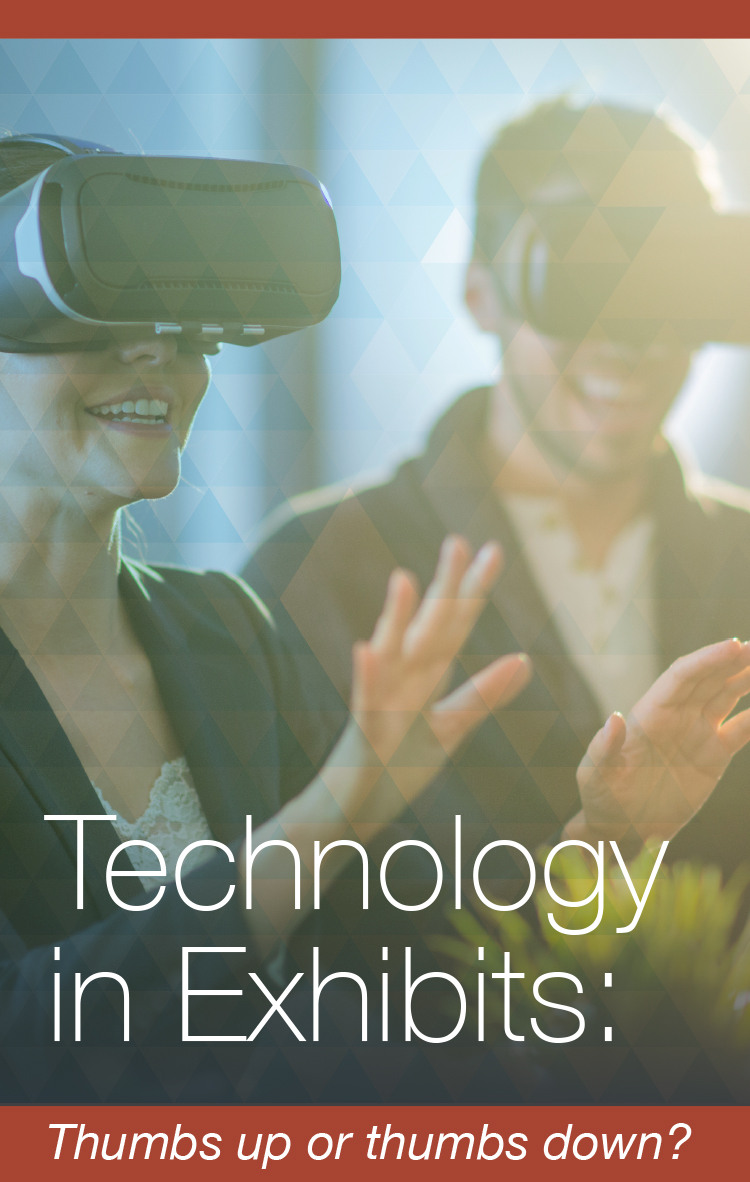
Part Two of a Two Part Series – Using technology in exhibits has many advocates but also gives rise to Chicken Little-ish naysayers who prophesy the disappearance of the personal interaction. To get a professional viewpoin ton the role technology can play at trade shows, Idea International interviewed Anne Trompeter, Principal, Live Marketing, on the subject.
Idea International: What are the major advantages of using technology in an exhibit?
Anne Trompeter: Technology can be a fantastic and relevant draw. It has the power to create interactive learning experiences with attendees. For instance, large equipment manufacturers can create a virtual experience that eliminates the need to bring a piece of heavy equipment to a show. Technology can help create an unexpected brand experience. Every industry has legacy companies that have been around for, say, a hundred years. Technology can help readjust the attendees’ perspective about these companies, as in, “Wow, this is a cool experience!” Technology can provide new brand attributes, something attendees wouldn’t have previously associated with the company.
Idea International: What are the biggest stumbling blocks to using technology in exhibits?
Anne Trompeter: The first stumbling block is cost, but like any other type of engagement technique, there is a range of pricing if you investigate. Find a way to make technology cost-effective. It can be pricey, particularly if it’s cutting edge because it hasn’t become a commodity yet. There are flexible out-of-the-box solutions to make technology inclusions work
The other stumbling block is that someone in the company sees something they’re excited about, and they want to do it in the booth. But it’s not appropriate for the message or the design. Figure out a way to capture the spirit of the technology: what was exciting? What did you think might work? Technology has to be appropriate. You must build in enough time to develop it and, when necessary, get approval from regulatory bodies.
Idea International: Are you aware of any cultural issues that exhibitors should keep in mind when using technology?
Anne Trompeter: You have to be hyper-aware of the audience when you are preparing language, text on a screen, lifestyle photos, and so on. We always advise exhibitors to work with companies in the region where they are exhibiting—for instance, a company like Idea International. The wrong cultural nuances can destroy an experience.
Idea International: Have you found that technology can provide scalable solutions—e.g., something developed for a trade show that can be used to sell in the field?
Anne Trompeter: For sure! And this connects to the idea of getting buy-in to develop a technology experience. If you are creating an interactive tool for messaging, create a tool that’s powerful on and off the trade show floor. A good experience for attendees can also be good in the field. Create an interactive sales tool that works on the show floor and in the field.
Idea International: If feasible, have you seen companies where development costs are shared across budgets?
Anne Trompeter: Budget sharing is a best practice. The event department pays for part of the engagement tool, but then different business groups kick in as well. It really helps to have different departments with skin in the game. They get involved with the project, they care about it, and sharing it across multiple entities in the company means that the technology project is much more likely to be a success.
Idea International partners with some of the best of class technology companies and can help you initiate a project or implement one that was designed for you domestically. We would love to discuss possibilities with you!


Comments are closed.